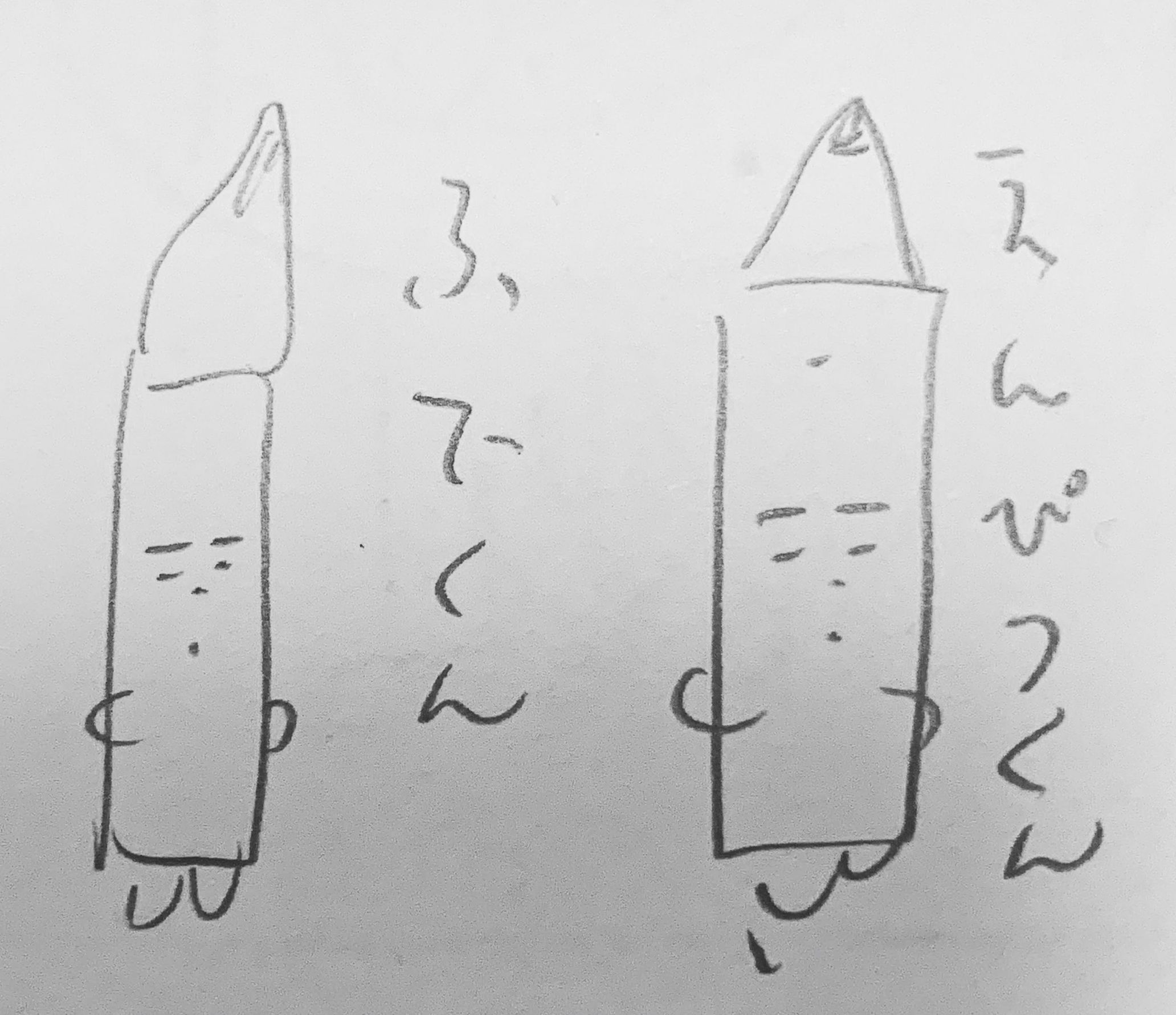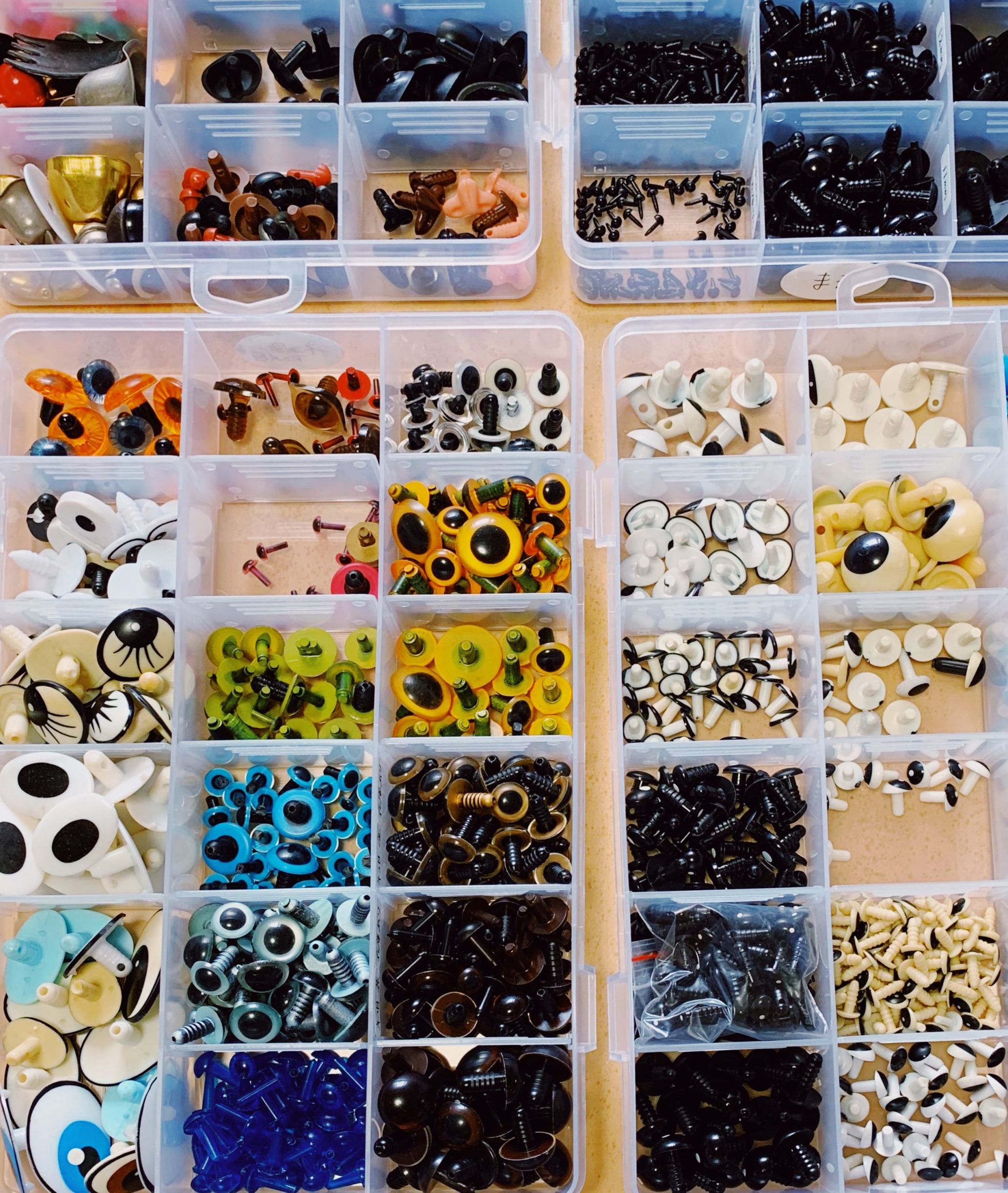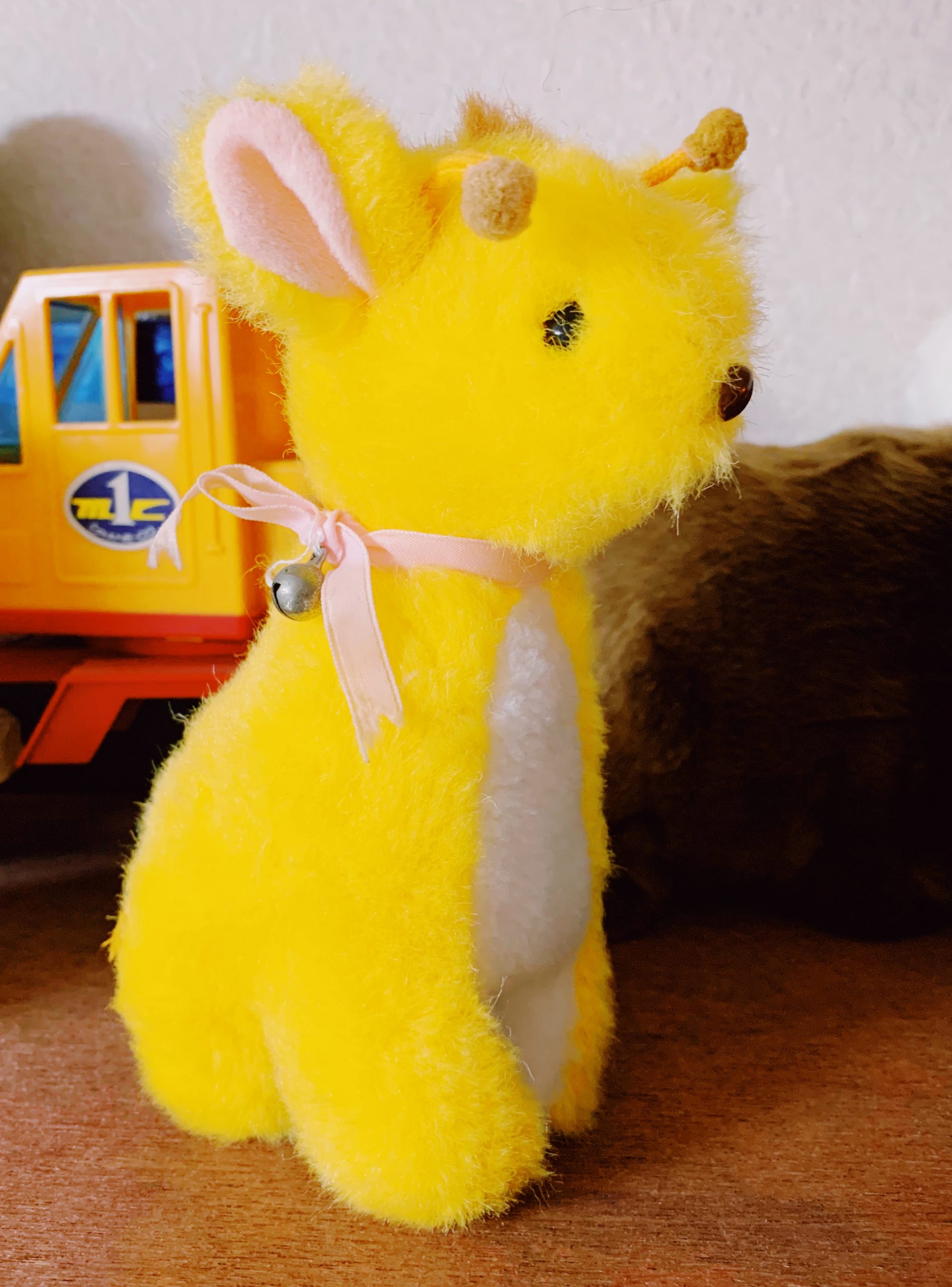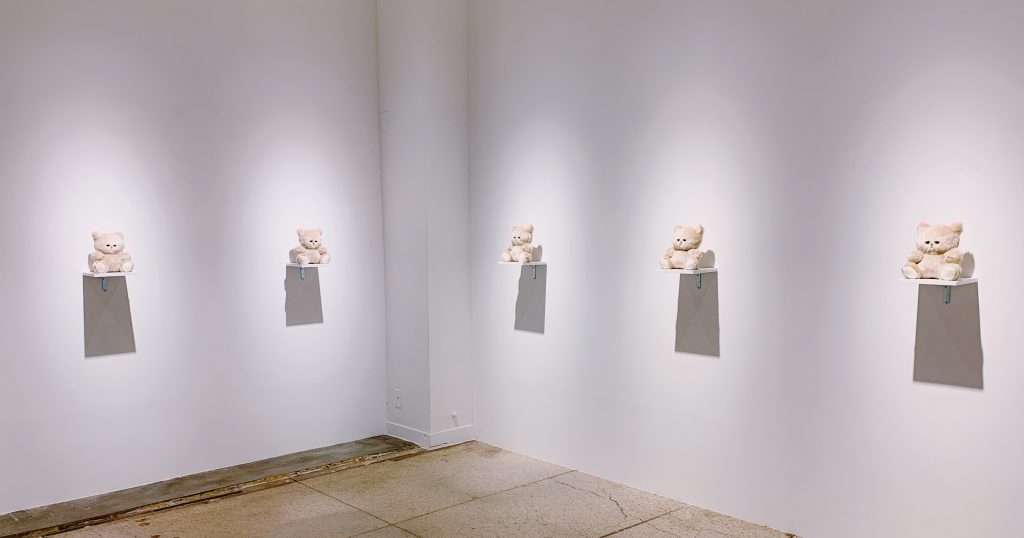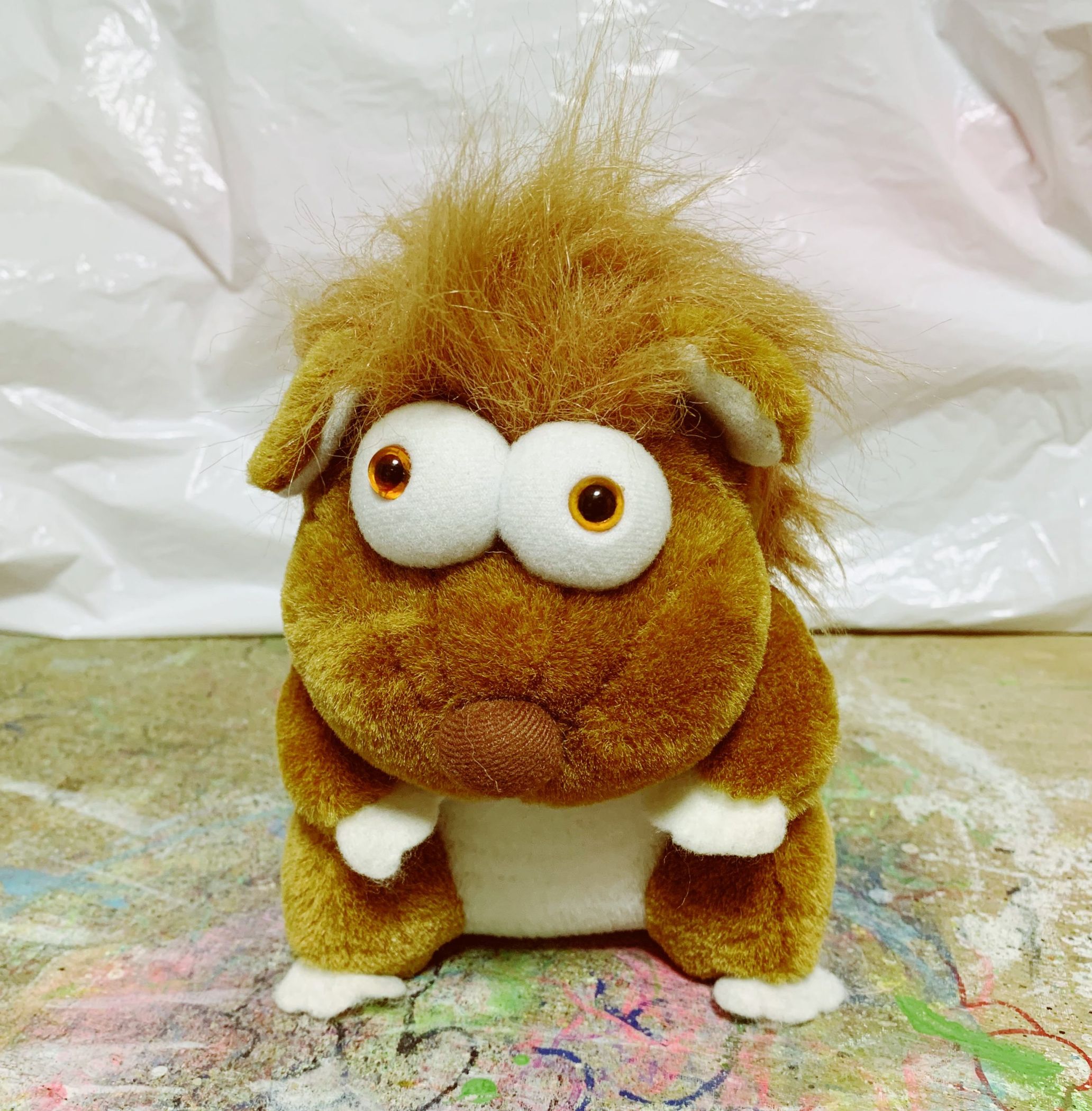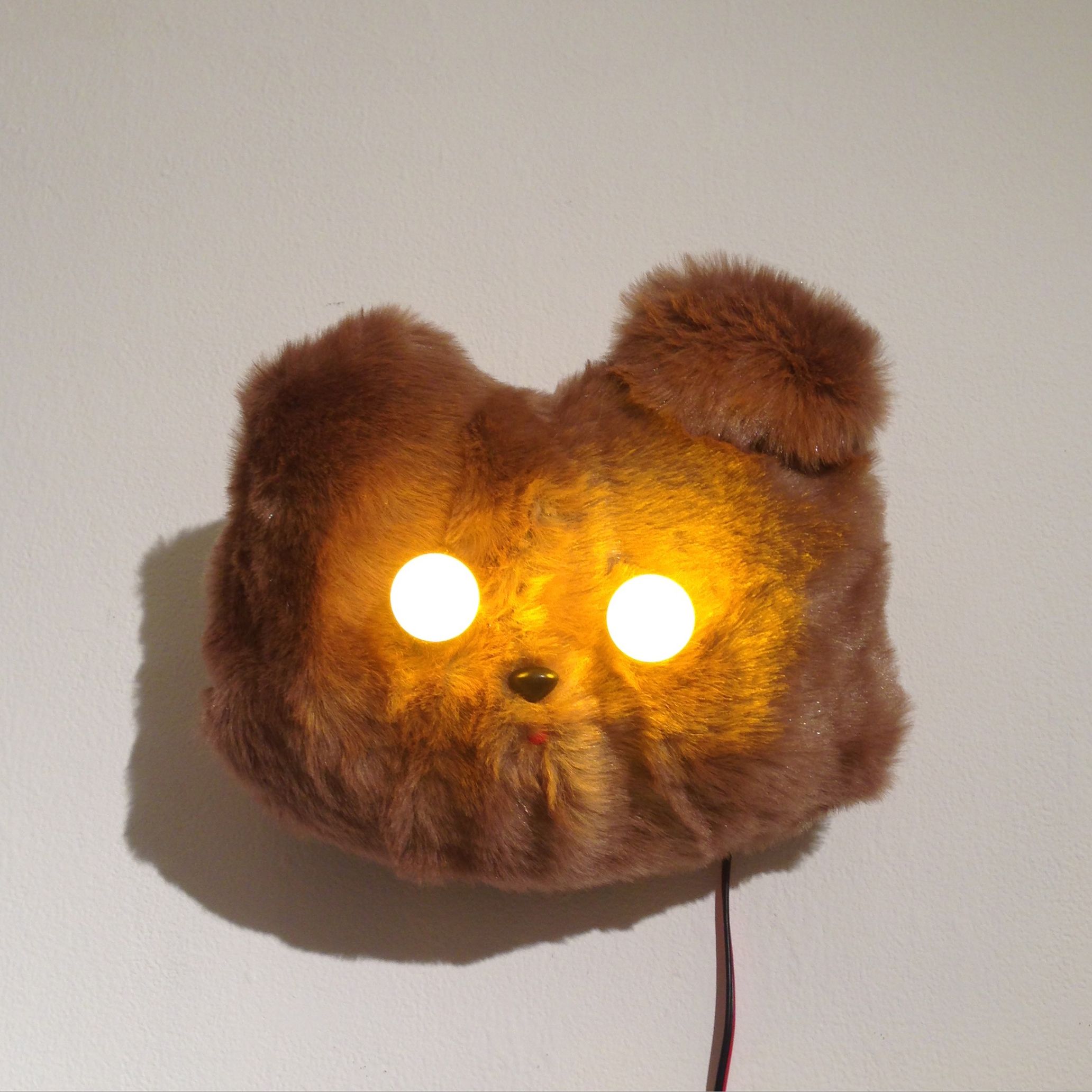With her novel toys that combine fluffy, soft fabrics and unusual materials such as electronics and toys, artist Meriyasu Kataoka transcends our idea of stuffed toys. She is a one-of-a-kind stuffed toy artist whose work ranges from drawings to collaborations with artists of various genres. Now, she has a solo exhibition at the Yokohama Doll Museum that commemorates the 10th anniversary of her career.
We tend to imagine children’s toys when we think of stuffed toys. But when we look at the strange shapes and innocent expressions of Meriyasu’s stuffed toys, we aren’t just comforted by their cute looks. The toys emit a strange and special something that encourages and excites. In the current exhibition are the following words: “There’s something that exists within the heart of the stuffed toy that time or place alone cannot explain.” Meriyasu’s works show us how important it is to try to communicate with something that exists outside of the tangible and to closely observe everything that exists within this world.
“…I like taking my time. That’s how I create cuteness.”
――How do you document all the works you create?
Meriyasu Kataoka: I draw all the stuffed toys and jot down their names in a simple notebook. Along with the drawings and names, I record their prices. I wasn’t great with technology, so I couldn’t write up a delivery slip on the computer until recently. So instead, I made copies from that notebook and handed them to shop owners in place of the delivery slip.
――You’ve given the stuffed toys unique names.
Meriyasu: Once one of the toys is complete, I invite them to dinner, eat with them, and play with them a bit. After that, the names come naturally to me. Some of the toys are hard to name, so I try sleeping with them for a night or going about my life with them. That helps me decide.
――When you make stuffed toys, do you draw something up first to decide what it’ll look like?
Meriyasu: I never really draw up a base image. My imagination process starts with standing in front of the sewing machine, choosing a fabric I like, and touching it. I think, “Maybe it would be cute if I made it like this?” If I start with the intention of turning something into the torso, but I don’t think it looks cute once I start stuffing it with cotton, I might try turning that part into a leg. It’s a process of trial and error. It’s hard to put into words, but I like taking my time. That’s how I create cuteness. Because if the toy is off by even a millimeter, it loses its cuteness.
――What kind of fabric and material do you use?
Meriyasu: Sometimes, I go to the store and buy materials that I like. Other times, I intentionally shop online. Even if the texture of the fabric is different from what I’d imagined, that can be interesting. With unexpected materials, I can create stuffed toys beyond my imagination. That succession of unexpected developments is fun. I collect all kinds of parts for the eyes, and if I find a craft store in town, I always check it out. Also, a stuffed toy factory that went out of business once gave me some parts, so I’ve used those in my work as well.
――I think the way you position and balance the parts of the face shows your personality.
Meriyasu: I hesitate on every part before deciding, like, “Which eyes would go best?” So making the face takes the most time.
――How many stuffed toys have you made so far?
Meriyasu: I’ve documented about 2,500 stuffed toys in my collection of works, which covers about seven years of stuffed toys. Even I was surprised to see how many there were when I organized the photos. (laughs) Now, the stuffed toys are more intricate, so each piece takes more time.
――That’s a huge number of stuffed toys for one person to make.
Meriyasu: Making the stuffed toys isn’t at all difficult for me. Instead, I’m the type of person who gets stressed when I don’t make toys. If anything, I’m not very good at clerical work, so sometimes I think it’d be nice if someone could do that for me.
――Your book of collected works includes photos of the studio you work in. Do you work in this studio alone?
Meriyasu: I always workalone. I’ve received inquiries before from people who want to be my apprentice or want me to hire them, but I just don’t have any interest in making a piece with another person. Collaborations are fun and stimulating though, because there’s a theme, and based on that theme, we work while divvying up the tasks.
“Creating a character is a continuous process of simplification.”
――You’re currently holding an exhibition to celebrate the 10th anniversary of your career. Could you tell us what initially inspired you to make stuffed toys?
Meriyasu: When I started making stuffed toys, I didn’t have the slightest idea that I’d become a stuffed toy artist. But when I made stuffed toys and gave them to friends, everyone loved them. Eventually, I started being invited to show my work, and before I knew it, I realized, “Wait, I’ve become a stuffed toy artist.”
――Did you have another job back then?
Meriyasu: I was working a regular part-time job. But there were times when I wondered what would happen if I kept on living like that. Sewing was my hobby, and I loved stuffed toys, so it was a natural progression to get to where I am today. When I started my career and told people that I made stuffed toys, they’d have an iffy reaction. But once I showed them actual pictures of my work, their reaction would become more positive. I’ve witnessed that moment many times, and I think it’s funny.
――Do you have any memories about your stuffed toys that stand out?
Meriyasu: I have a memory for each stuffed toy. Sometimes, customers bring in the toys they’ve bought, and when a toy I hadn’t paid too much attention to has been cherished by its new owner, that really moves me. Like, “Wow! You’ve really been cherished! Isn’t that amazing?” (laughs) I think when toys go home with someone, people discover their charm.
――Have you liked stuffed toys since you were little?
Meriyasu: If anything, stuffed toys may have been all I liked. Even when dolls or other toys were popular, I didn’t have any interest in them. The stuffed toys I had were stuffed animals—just regular ones that looked like they’d be sold anywhere.
――How did you actually play with the stuffed toys?
Meriyasu: We chatted. How I play hasn’t changed since back then—there are two ways: one where I pretend to talk as the toys, and another where I become the director and all kinds of characters appear in my puppet show. In the past, I used to play the director more often. In my latest exhibition, there’s an installation that’s like a puppet show.
――Out of all the stuffed toys you’ve played with, do you have an especially memorable pal?
Meriyasu: I had a stuffed dog that I got for Christmas in elementary school. It was the first stuffed animal that my parents got for me because I wanted it, but at some point, it disappeared. I don’t remember details from that time, so maybe I lost interest in it at some point. But the stuffed giraffe that I used to play with in kindergarten happened to be hidden in a box, so my parents never threw it out. I still have it to this day.
――Could you tell us about your past exhibitions?
Meriyasu: I come up with most of the themes on my own. I always have a long list of things I want to do, so I’m never out of ideas for themes. I decide on the theme based on the place and person; if it’s a certain gallery or curator, I’ll make the exhibition accordingly.
――You had an exhibition called Doppelgänger, which wasyour third exhibition at the Nakameguro art gallery, VOILLD. The stuffed toys, which you created based on characters that everyone knows, were striking. What were your criteria for choosing the characters?
Meriyasu: The most important thing was for the characters to be very recognizable, characters that everyone knows. People should have been able to tell who the character was by the colors alone. I think that creating a character is a continuous process of simplification. When I make a stuffed toy, I also shave down the number of elements.
――How about A≠B≠C, your exhibition that was in a silent auction format?
Meriyasu: The toys may look the same, but if you look closely, they’re different. I want people to pay close attention to even the small details of the world, and that’s how the idea for this exhibition came about. I worked hard to make stuffed toys with nearly the same faces and shapes.
“I want people to know that stuffed toys can actually talk and be your friends!”
――Is there anything you want to do outside of exhibitions?
Meriyasu: I always want to do puppet shows. I want people to know that stuffed toys can actually talk and be your friends! There are a lot of people who’ve never seen a puppet show, so I’d like them to see one. And with a live performance, you can see the audience’s reaction. Honestly, sometimes I’m happier when people praise my puppet show than when they praise my exhibition. (laughs)
――Could you tell us about your current 10th-anniversary exhibition?
Meriyasu: Honestly, the 10th anniversary wasn’t the focus, but I figured if I was going to hold an exhibition at the [Yokohama] Doll Museum, I couldn’t think of anything other than turning the doll collection into stuffed animals.
――I think that lovable quality, or the charm of your stuffed toys, has something in common with the “character culture” that carries on to this day in Japan.
Meriyasu: I think Japan’s character culture comes from the yokai culture of the old days. I once had a yokai-themed exhibition at the Mejiro bookstore/gallery Popotamu, where I had the opportunity to dig a bit deeper into the subject of yokai. There’s a deep-rooted culture of turning various phenomena and natural features into yokai characters. I think the Japanese are a people with a rich imagination. Plus, we all like cute things, right?
――Has your definition of “cute” changed over the past ten years?
Meriyasu: It hasn’t changed at all. I have a toy named Gyoro-chan at my house that doesn’t have a fixed point of view, so you can’t tell where it’s looking (laughs). My definition may not be typical, but I think it’s so cute. Even if I look at its expression, it seems vacant. I can’t help but wonder what it’s thinking.
――Maybe that stimulates your curiosity and creativity.
Meriyasu: She exists in a place that’s entirely beyond me.
――Perhaps in your ten years of creating, that’s what you’ve been chasing.
Meriyasu: Maybe I’m chasing Gyoro-chan. (laughs)
――Perhaps you’re drawn to a universe that’s far beyond your imagination.
Meriyasu: I think I’ll always love the areas that I don’t understand.
――I feel like you take certain things that are invisible and bring them into the world in the form of a stuffed toy. You know, things that don’t really exist, but seem like they might be hiding somewhere.
Meriyasu: That may be true. When I come up with the idea, I think, “Hey, is there something here?” It’s as if something god-like is present.
――You keep creating. Even as the world around you changes, it’s incredible how your imagination and attitude stay the same.
Meriyasu: They haven’t changed at all. I think I have a good imagination because I sleep a lot. (laughs) I think people become worse when they don’t sleep. As long as I sleep well, I can keep doing what I want to do. I try to create excuses to go outside and walk when I have time. Exercise, diet, and sleep. I think it’s important to take care of the basics properly.
――I think when stuffed toys are close by, they have a reassuring quality, or I suppose a certain power.
Meriyasu: Maybe there’s something therapeutic about them. I think a lot of people feel calmer in the presence of a stuffed toy.
――On the street, you see a surprising number of adults—not just students—who have little stuffed toy keychains on their bags.
Meriyasu: Even middle-aged men attach them to their backpacks. I think everyone is really just holding back from a life with stuffed toys. (laughs) Stuffed toys say things that you can’t say yourself, and even people who find it difficult to make conversation can feel at ease with a stuffed toy on their lap, as if it compensates for their weaknesses. Stuffed toys may not be necessary for mentally strong people, but when I’m a bit anxious, having a stuffed toy nearby puts me at ease. It’s really amazing that even though they look cute, they’re also dependable. It reminds me that they have an invisible power.
Meriyasu Kataoka
Meriyasu Kataoka began her career in 2011. With a focus on stuffed toys, she makes toys that move, glow, and can be played with and loved, not just displayed. Furthermore, she writes original scripts for puppet shows she performs in various locations. She also works with various other mediums, such as manga, drawing, woodwork, and clay. She has collaborated with artists from different genres for stuffed toys/puppet shows and has also provided work for advertisements in shopping centers.
Instagram:@kataokameriyasu
■Meriyasu Kataoka 10th anniversary exhibition: “Meriyasu’s Doll Museum”
Dates: Until March 13th
Venue: Yokohama Doll Museum 2F The Multipurpose Room
Address: 18 Yamashita-cho, Naka-ku, Yokohama, Kanagawa Prefecture
Time: 9:30-17:00 *Last admission at 16:30
Closed: Mondays
Exhibition fee: Adults (High school students & up) ¥600, Elementary & junior high students ¥300
*Museum admission fee (Adults ¥400, Elementary and middle school students ¥200) Free admission for pre-school children.


